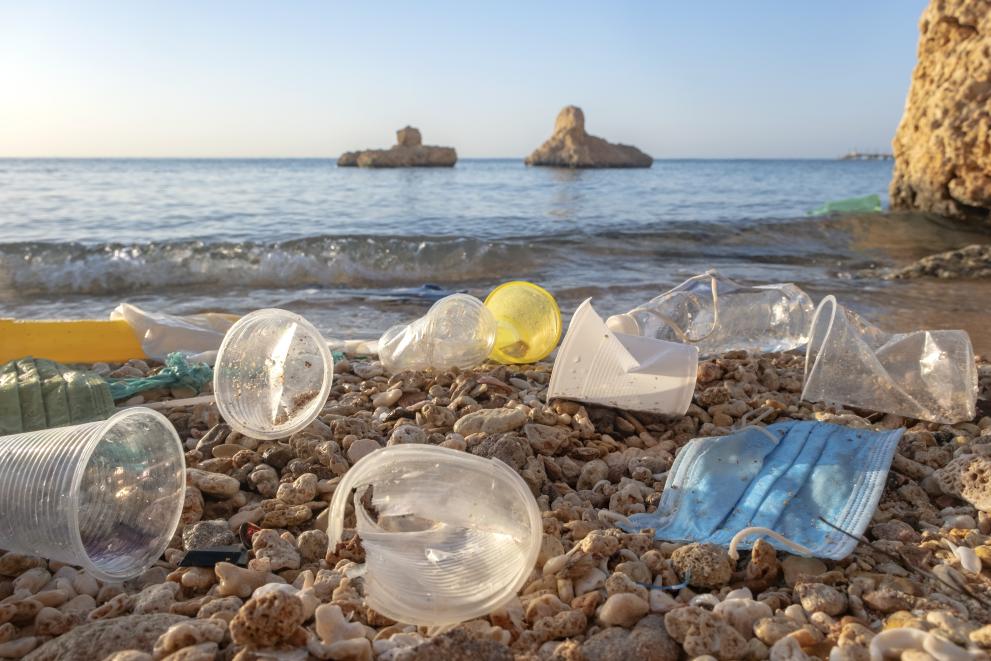
The method could help decision-makers find the best solutions for meeting the objectives of the EU Marine Strategy Framework Directive (MSFD).
Decision-makers face a host of challenges in tackling marine pollution. While it is clear that we need innovative solutions to deal with this rising problem, how do we measure the impact of proposed measures and decide which to use?
Compounding the challenges, decision-makers must account for the broad, and sometimes competing, interests of affected parties. These groups include plastic producers, the tourist and fishing industries, environmental groups, consumers and governments.
This new study presents a solution to some of these key challenges. The researchers designed a framework for evaluating innovative technologies that help stop microplastics and macroplastics entering the sea.
Developed as part of the EU CLAIM (Cleaning litter by developing and applying innovative methods) project1, the framework considers both socio-economic and environmental impacts, and the interests of different sectors. CLAIM explores how technologies can help EU Member States attain Good Environmental Status (GES) for European seas to meet their MSFD goals.
To illustrate how the method works, the researchers applied it to the Mediterranean Sea. In this case study, they tested it out on two technologies for removing plastic from water before it reaches the sea:
- For macroplastics (larger than 5 millimetres (mm) in diameter): a floating barrier that collects litter in rivers.
- For microplastics (smaller than 0.05 mm): a filtering system for waste-water treatment plants.
The framework is a form of multi-criteria decision analysis (MCDA). This provides an organised way of informing decisions while accounting for the many relevant interests concerned. It assesses the technologies using four criteria:
- annual costs of investment and operation;
- reduced exposure of Natura 2000 areas to plastic pollution;
- reduction in plastic pollution at aquaculture finfish and shellfish sites; and
- reduction in plastic pollution at cetacean critical habitats.
The researchers consulted experts in academia, industry and policy to decide how they should weight the criteria. Based on this feedback, they created a weighting system for the different criteria. Having assessed the sensitivity of the results to changes in criteria weights2, the researchers found that the most sensitive criterion for microplastics was the cost of reducing plastic pollution. For macroplastics, however, the most sensitive criterion was the number of monitoring points in cetacean critical habitats areas where at least 80% of the targeted reduction is achieved.
The impact of the technologies on plastic pollution in the sea will naturally vary according to how many are installed, where, and how efficiently they operate. For this reason, the researchers modelled their impact based on their configuration, specifically, whether 40, 120, 240 or 400 technological solutions are installed, and with removal rates of 25%, 50% or 75%.
The modelling simulated the movement of micro- and macroplastics from major land-based sources (rivers, coastal cities) to the Mediterranean Sea. It accounted for the most important processes that affect movement. These include sea currents and the particles’ buoyancy.
Based on the modelling results, and using the four criteria to rank the configurations based on the balance of their costs and impact on pollution removal, the study concludes that it is better to have fewer installations (40–120) to clean up macroplastics, but with higher removal rates (50–75%). This is because a minority of rivers release the majority of plastic pollution: the 40 most polluting rivers are responsible for 89% of macroplastics that enter the Mediterranean from rivers. Increasing the number of installations to 120 would ensure that median sources of pollution are also covered.
For microplastics, on the other hand, a much larger number of sites (240–400) with lower removal rates (25-50%) provides the best results when both costs and impact are assessed. Waste-water treatment plants are more evenly distributed along the Mediterranean coast than rivers, and microplastics travel shorter distances from their sources than macroplastics.
The results also underscore the high costs of managing microplastics. The best options for managing microplastics in this study cost around 11 times more than those for managing macroplastics.
The researchers further note that this method could support the goals set by the EU Action Plan Towards Zero Pollution for Air, Water and Soil. This calls for a reduction by at least 50% of plastic litter at sea and by at least 30% for microplastics released into the environment by 2030.
In addition, the European Commission’s proposal for the revised Urban Wastewater Treatment Directive foresees that waste-water treatment plants should introduce extra measures to remove micro-pollutants from urban wastewater, including microplastics.
Footnotes:
- Funded under Horizon 2020. See: https://cordis.europa.eu/article/id/436638-aim-for-plastic-free-seas
- The researchers note that, as they are dealing with a relatively new approach, there is no benchmark regarding the weights in this field of research. Therefore, they suggest a common way of proceeding in such circumstances, by using additional different sets of weights and performing a sensitivity analysis. The effects of weights are described in detail in the study’s results section.
Source:
Cunha, M.C., Tsiaras, K., Marques, J.R., Hatzonikolakis, Y., Dias, L.C. and Triantaphyllidis, G. (2023) A multi-criteria assessment of the implementation of innovative technologies to achieve different levels of microplastics and macroplastics reduction. Marine Pollution Bulletin 191: 114906. Available from: https://doi.org/10.1016/j.marpolbul.2023.114906
Details
- Publication date
- 8 November 2023
- Author
- Directorate-General for Environment

